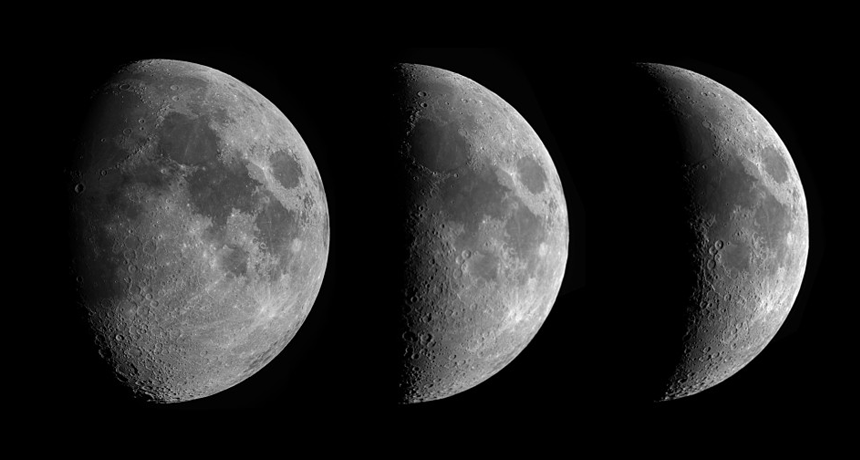Fast-spinning young Earth pulled the moon into a yo-yo orbit
Just 24,000 years after its birth, the moon zipped through its lunar cycle in little more than 35 hours

ODDBALL ORBIT The young moon’s short, oblong orbit produced a lunar cycle unlike the one seen nowadays (as seen in this composite of some phases of the moon in 2013), new research illustrates.
University of London Observatory/UCL Physics & Astronomy/Flickr (CC BY 2.0)







